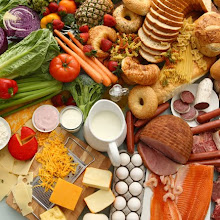TOFU
THE ORIGINAL RECIPE TOFU
3000 ml Soya milk
15 gm Calcium Sulfate
200 ml Water
1. Cook soya milk in pot for 10 minutes over medium heat until the fragrance of the soya milk is noticeable, keep stirring the milk while cooking.
2. Turn to low heat and continue cooking until boiling. Measure the temperature of the milk must be in 85˚C (185˚F).
3. 15gm Calcium Sulfate mix with 200 ml water; mix evenly. Pour the coagulator into a container and stir well.
4. Hold the soy milk 60cm above the coagulator and quickly pour into the container.
5. Do not move or shake the container and let the mixture set for 5 minutes until the soya pudding is set.
6. Cover the mold with a big piece of cheesecloth the mold has to have ability to drain water.
7. Gently break the soy pudding into pieces and put into cheesecloth in the mold. Cover it whit the cheesecloth.
8. Close up the mold and put the heavy object on top of the mold.
9. Leave the weight about 30 – 45 minutes and when the tofu is ready remove from the mold.
10. Then we deep fry the tofu and it can eat with the sauce.
EXPERIMENT FAILED
1. BEFORE THE TASK
- Soak, 500gm of soy bean into a 2 liter of water.
- Boil, 500gm of soy bean into a 2 liter of water in a medium heat about 1 - 2 hour.
- Change the calcium sulfate into lime juices cordial
2. DURING THE TASK
- We using only the soy bean that had been boil, because we need the blend the bean... and the bean that had a soft texture is the boiled wants.next time we are using the soak wants cause to soft it we need to soak it about 6 - 8 minutes.
- Record all the activity that we had done.
- follow all the process and method that had in our recipe.
3. AFTER THE TASK
- Our result is failure, the soy milk not became into curdling. We check our record, why this thing can happen? we try to using other method by re-boiled the milk again after we put the lime juices, but the milk still don't change into curdling.
CONCLUSION
We had found the problem... and we will try to solve it for the next experiment.
- The water measurement is not right... we need to use ratio 2:3.
- Do not use lime juices cordial, using 100% fresh lime juices without adding a water on it.
- Soak the soy bean for at least 6 - 8 hours, don't try to boil it! it wont happed.
- Do not over boiling the soy milk, follow the temperature require correctly.



















